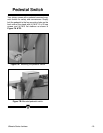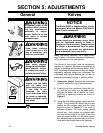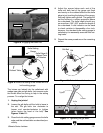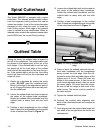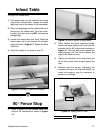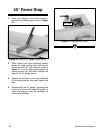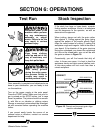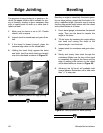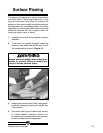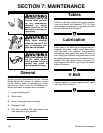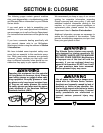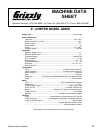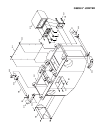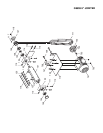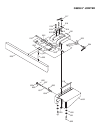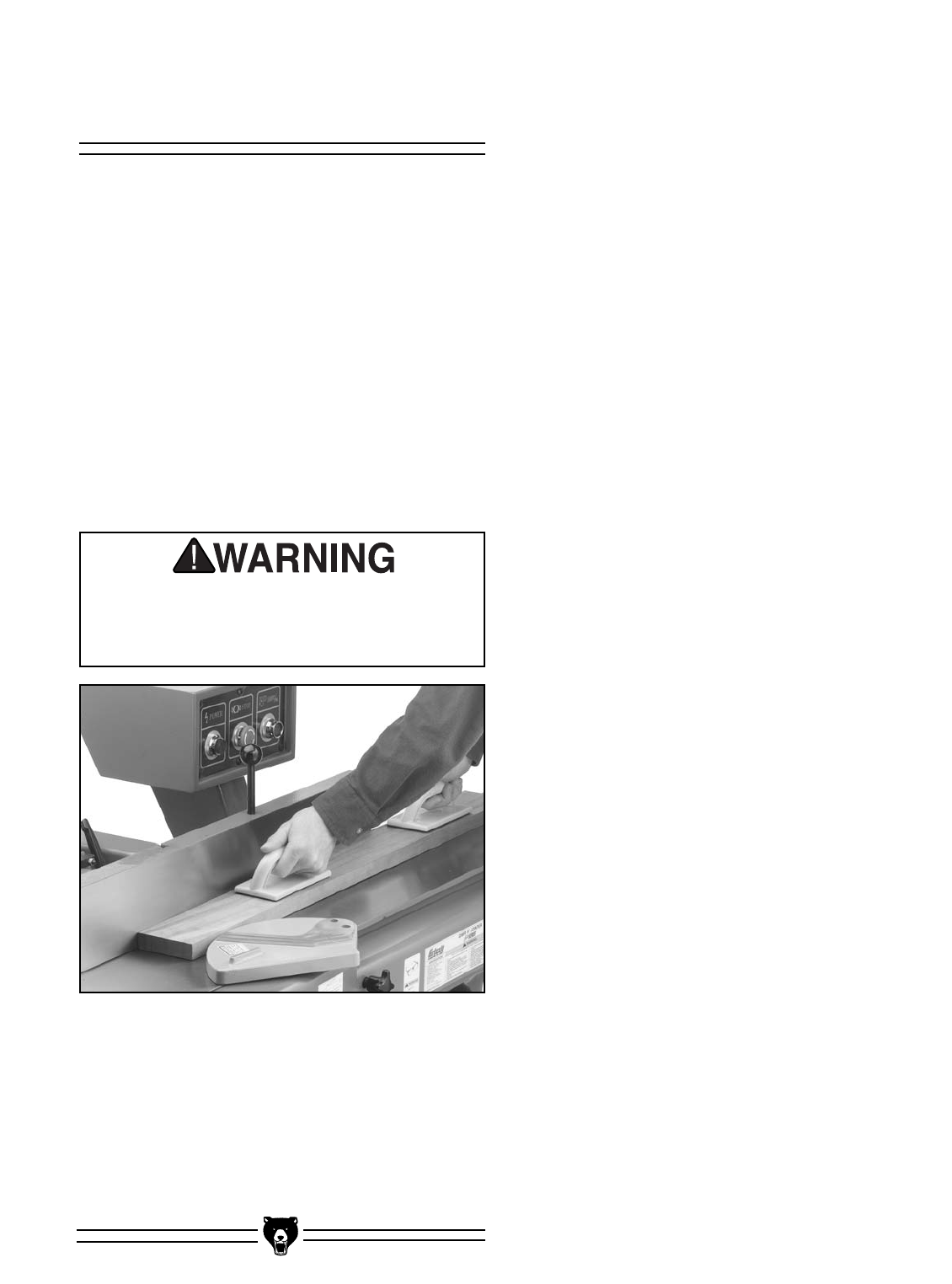
Ultimate Series Jointers -21-
Surface Planing
The purpose of planing on a jointer is to produce
one flat surface. The theory behind this is that
once you have one flat surface on a board, the
board can then more readily be milled to precise,
flat dimensions on a thickness planer. It is nearly
impossible to surface plane both sides of a board
effectively because the two surfaced sides will
retain any warps, cups, or twists.
1. Inspect your lumber for soundness and grain
direction.
2. If the stock is cupped (warped), place the
concave side down and slowly feed it over
the cutterhead as shown in Figure 21.
3. Inspect your results. Most likely, many pass-
es will be necessary before your lumber has
a flat surface.
4. If the stock has large or loose knots, consid-
er finding another workpiece. Knots in a
workpiece can be dangerous to the operator,
as well as destructive to equipment.
Figure 21. Correct method for surface planing.
Always use push paddles when planing the
surface of a board. Failure to comply may
result in serious personal injury.



